The Costs of Bat Decline
Can we afford to lose bats? A recent study by Eyal Frank of the University of Chicago reveals that the dramatic decline in U.S. bat
As I rappelled down a sheer rock wall to reach the entrance to America’s most important remaining bat hibernation cave, I couldn’t believe my good luck. I’d finally achieved my life’s dream of becoming a full-time bat biologist, and in my first week of employment I’d become part of a film crew documenting highlights from Merlin Tuttle’s more than 60-year-long career studying and conserving bats.
Over the next nine days we would film key elements of success at caves in Alabama and Tennessee, telling the story of how the endangered gray bat (Myotis grisecens) recovered from predicted extinction to a population of millions. This tour would feature Merlin and key partners telling their stories, on location, at five of America’s most important bat caves.
Our trip was made possible in part due to an invitation from the Southeastern Cave Conservancy (SCCi), who invited Merlin to be their 2023 Distinguished Lecturer. His speech was a rousing success, earning a standing ovation from an audience of several hundred cavers.
Our first stop was the Wheeler National Wildlife Refuge where we obtained our access permits and interviewed Nick Wirwa, their wildlife biologist. He manages the refuge’s caves, including Fern, the winter home of more than half of the gray bat’s entire species population, and Sauta, the area’s largest maternity site.
Nick explained during his interview, the government cannot afford onsite management despite these cave’s importance. To improve protection, the Wheeler Refuge partners with professional cavers from the National Speleological Society (NSS) and the SCCi to ensure optimal protection. These private, volunteer partnerships are critical to the future of cave-dwelling bats, hence our plan to prominently feature the outstanding successes at Fern Cave.
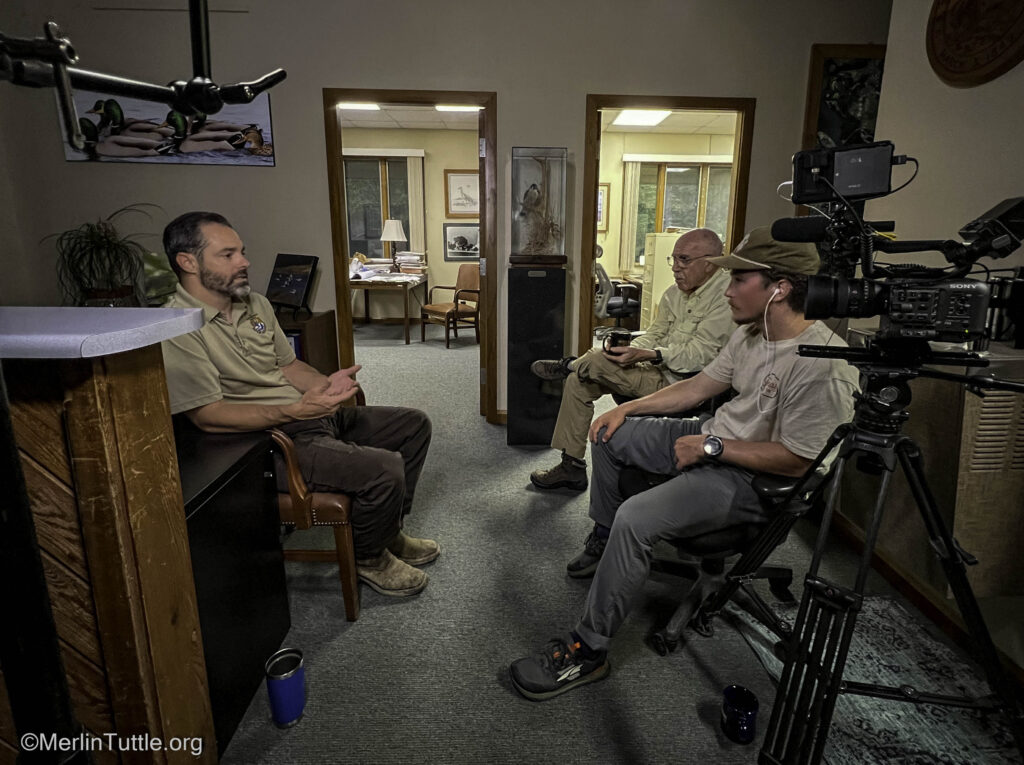
Our visit to Fern was led by Steve Pitts, the volunteer site manager for the SCCi, and his wife, Jennifer Pinkley, author of the book Fern Cave. Safe backup for the team was provided by expert volunteers, Ted Doggett and his wife, Makaria Coley, both skilled members of a cave rescue team from Huntsville. As a team we were quite safe, but we marveled at stories of Merlin having decades earlier sometimes entered Fern alone to study bats!
Difficult for humans to reach, Fern Cave is perfect for bats. It contains more than 15 miles of “canyon” passages that are often over 100 feet tall. This enables the cave to trap huge quantities of cold air. Multiple entrances provide a wide variety of temperatures within the range most needed by hibernating gray bats. Due to its size and complexity, the cave’s bats cannot be fully surveyed. However, it’s safe to estimate millions, mostly gray bats, frequent this cave.
Once we’d hiked the steep, mile-long trail to one of Fern Cave’s several entrances, we prepared for our descent into the sinkhole that leads to the cave entrance. Before this trip, I had no idea that I would be roping! When it was time for the MTBC gang to go down, for whatever reason, I was nominated to go first. The one tricky spot was when I transitioned from bracing against the wall to a sudden free-fall drop! Other than that, I made it down with ease.
From the bottom, I marveled at Joey being lowered down in a harness to track Merlin’s descent, followed by Teresa. Merlin went up and down twice, for filming. Going up was much harder than down. He only made it look easy!
The next morning, we interviewed Ralph Jordan, a key figure in saving the gray bats of Sauta Cave (along with many others!) more than 40 years earlier. We were permitted to enter Sauta Cave through a bat gate. I had never given a thought to the complexity of opening one; I don’t think even an experienced escape room enthusiast could have figured it out! After navigating the impressive gate, Merlin showed me evidence of bat stains and how to estimate the population size using them. This was the first time since before the pandemic that I had been inside a cave and it felt like coming home! We carefully avoided the bats’ summer roosting area, as gray bats are especially easily disturbed.
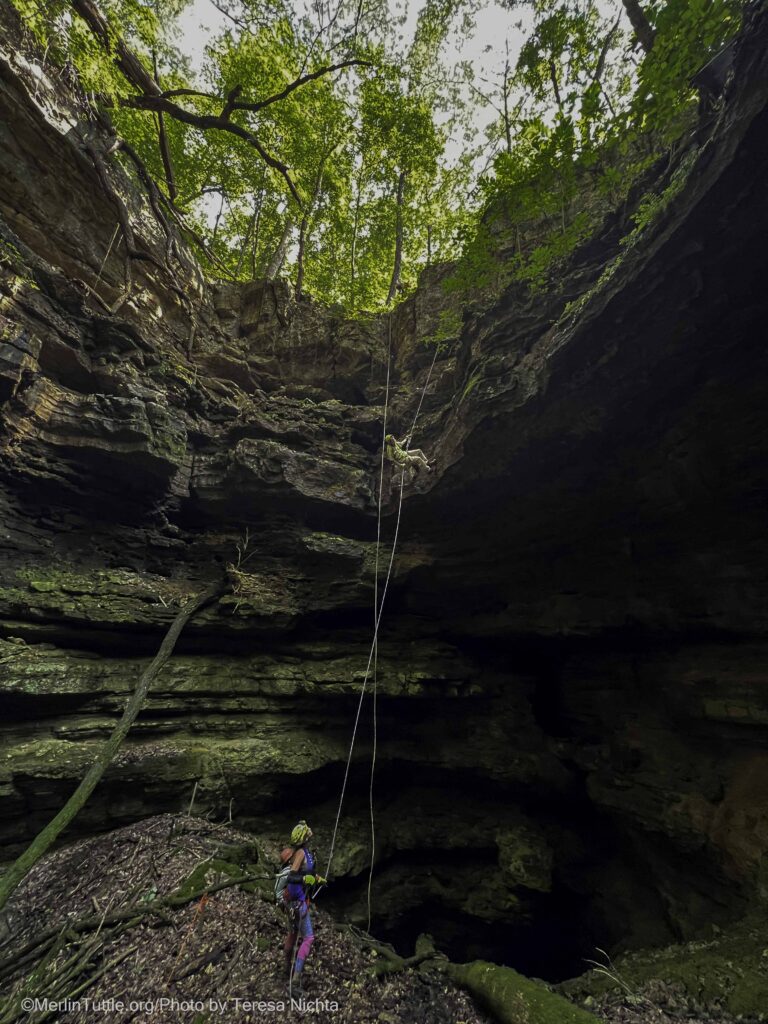
That evening, I was surprised to see we weren’t the only ones waiting for the bats. There were ten people, four adults and six kids aged 3-14. Seven of them were wearing plastic ponchos as though they were in the “SplashZone” at SeaWorld. I clearly failed to hold a poker face as they noticed me staring in amusement.
While Merlin, Ralph, Joey (our videographer), and Teresa (Outreach and Archive Manager at MTBC) captured the scene, I told the kids stories about bats and watched their rapt fascination as they experienced their first bat emergence. Overcome with excitement, they told me about anything and everything that came to mind (with one boy promptly reminding the others to only talk about bats). That night, Ralph and Merlin came full circle; they got to see their hard work saving Sauta Cave providing awe and inspiration for future generations.
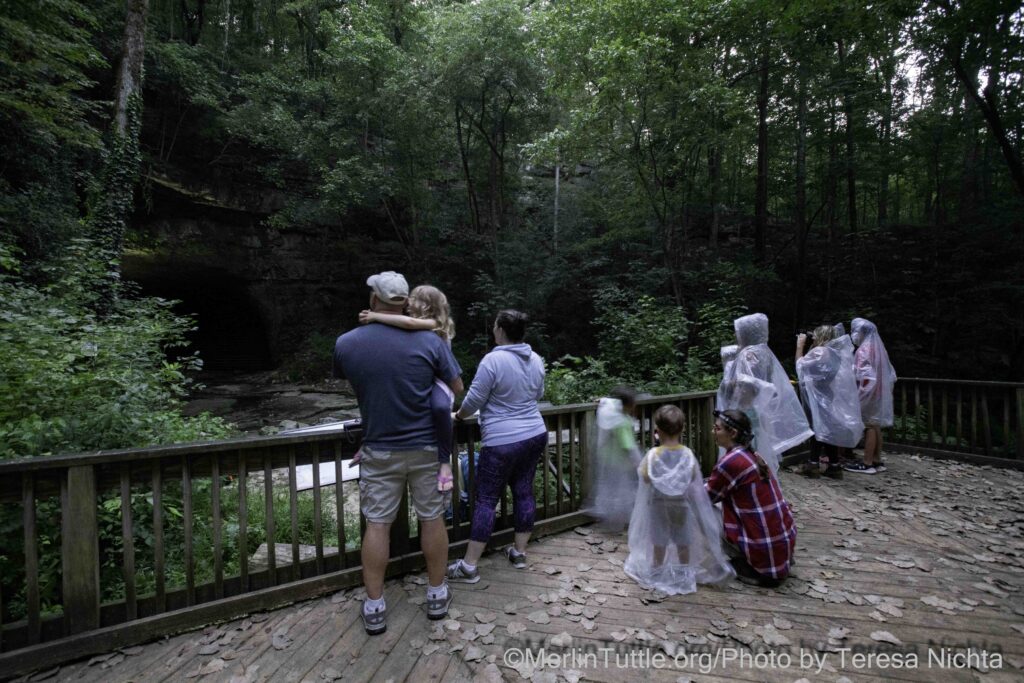
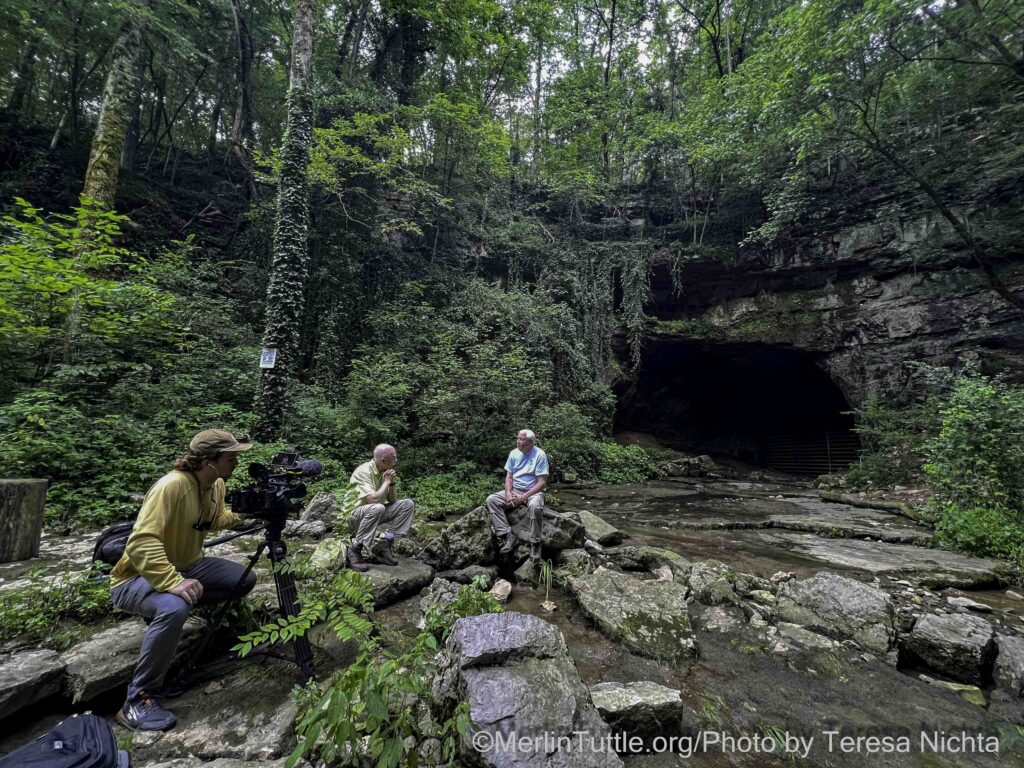
On the following evening, we took a motorboat to join a hundred-plus “BatYakers” (kayakers + bat watchers) at Hambrick Cave, located a few miles away from Sauta on Lake Guntersville. An SCCi board member, Roger Haley, also a paddling enthusiast, had organized a bat watching event. Backlit by the setting sun, approximately 100,000 gray bats streamed by, sometimes within inches of our faces, a real thrill for everyone! Prior to protection, organized decades ago by Merlin and Ralph, nearly this entire colony had been killed in a single incident when fearful visitors built a fire in the cave entrance.
We next visited Nickajack Cave, in Tennessee, a cave similar to Hambrick. Both are maternity sites for gray bats, and were no longer used prior to protection and recovery. Now, restored, the colonies serve as important tourist attractions. In our interview with Zach Bopp, the owner of Chattanooga Guided Adventures, a kayak tour company, he explained how the Nickajack bats boost the local community’s economy. Zach’s guests were pleasantly surprised to have their tour led by Merlin!
My job at Nickajack was to steer a tandem kayak while Joey captured the event on his video camera. I had never experienced a bat emergence like those of Hambrick and Nickajack Caves. The bats flew so close to us! Joey and I witnessed one circle nearby before it dove to the water surface to capture a hatching mayfly! We watched breathlessly as the bats maneuvered among the kayaks. I can only describe those moments as some of the most magical experiences of my life–moments made even more special watching the public’s growing love and appreciation for bats.
After our evening at Nickajack, we interviewed Cory Holliday, the Tennessee Nature Conservancy’s (TNC) cave specialist, about the partnerships required to protect Hubbard’s Cave. This is another major hibernation site for gray bats. In the early 1980’s, it was being heavily vandalized, and most of its bats had been lost. Based on his documentation of past numbers, Merlin convinced the TNC to purchase the property and the Tennessee National Guard to haul more than 100 tons of material and equipment up a mile of rugged mountainside as a training exercise. Cory explained how volunteers from five states and several organizations collaborated in building the two huge gates required to ensure adequate protection. After Cory’s interview was completed, the leaves between his feet began to move. To everyone’s amazement, a timber rattlesnake began to emerge. The snake (and Cory after stepping aside) remained unharmed!
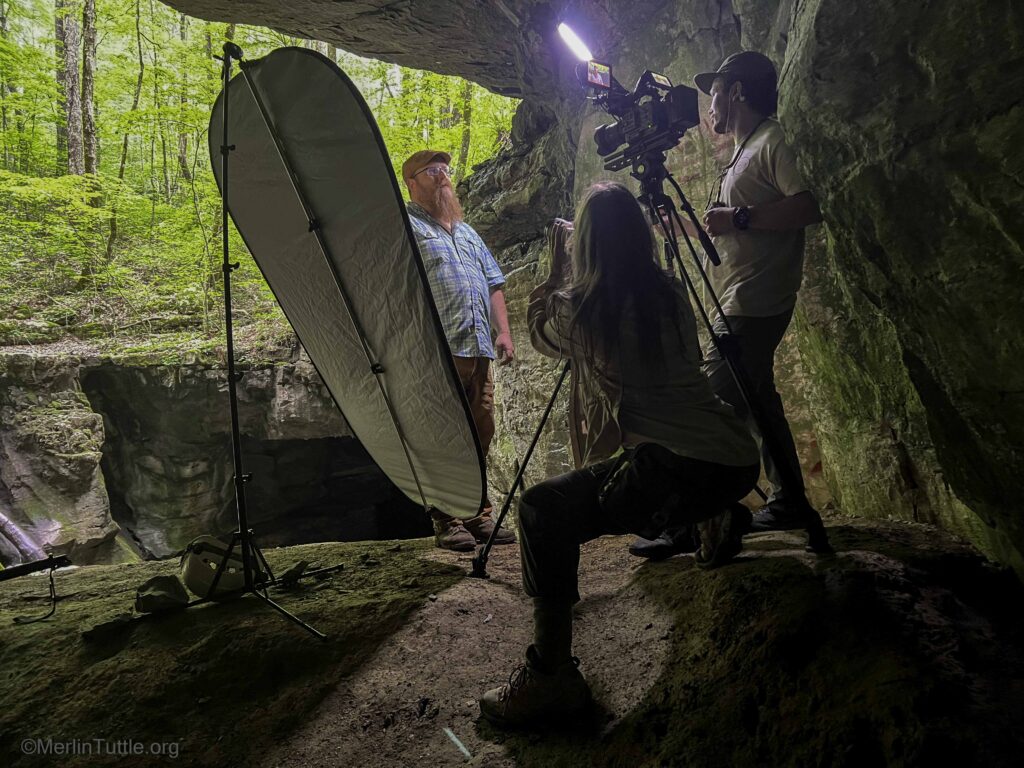
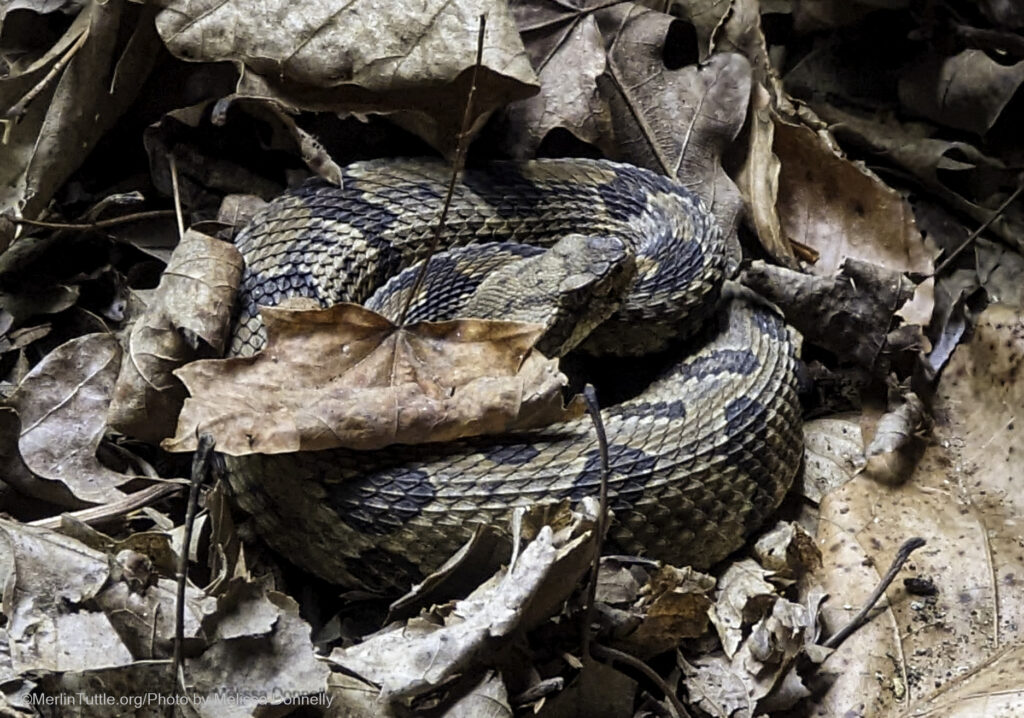
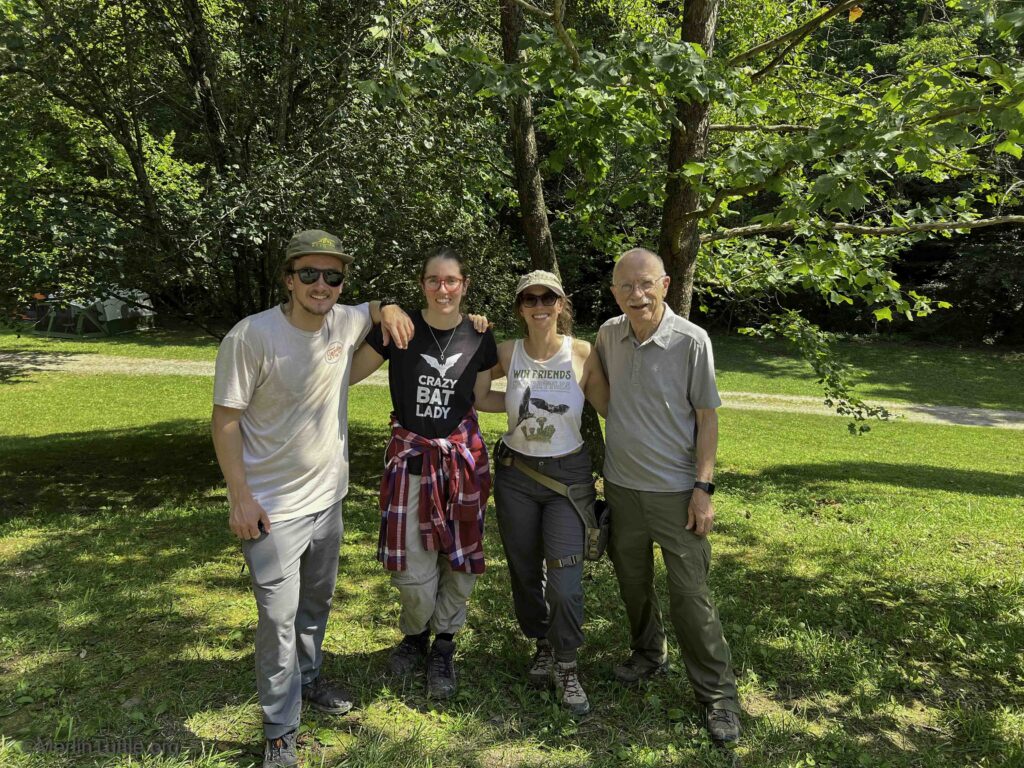
The week flew by. I am still in shock and awe that I got to walk alongside Merlin while he relived the beginnings of his legacy; all during my first week of work! As will be illustrated in our forthcoming documentary on gray bat recovery, prioritizing and gaining protection for the most important sites can be quite challenging, requiring thorough research and the help of many. However, dramatic progress is still possible!
Love our content? Support us by sharing it!
Can we afford to lose bats? A recent study by Eyal Frank of the University of Chicago reveals that the dramatic decline in U.S. bat
Bats are among the most fascinating yet misunderstood creatures in the natural world, and for many conservationists, a single experience can ignite a lifelong passion
Many bat conservationists know that Kasanka National Park in Zambia is an exceptional place for bats, but it is also the place that sparked my
The Kasanka Trust is a non-profit charitable institution, which secures the future of biodiversity in Kasanka National Park in Zambia. They welcome internships for students
2024 © Merlin Tuttle’s Bat Conservation. All rights reserved.
Madelline Mathis has a degree in environmental studies from Rollins College and a passion for wildlife conservation. She is an outstanding nature photographer who has worked extensively with Merlin and other MTBC staff studying and photographing bats in Mozambique, Cuba, Costa Rica, and Texas. Following college graduation, she was employed as an environmental specialist for the Florida Department of Environmental Protection. She subsequently founded the Florida chapter of the International DarkSky Association and currently serves on the board of DarkSky Texas. She also serves on the board of Houston Wilderness and was appointed to the Austin Water Resource Community Planning Task Force.
Michael Lazari Karapetian has over twenty years of investment management experience. He has a degree in business management, is a certified NBA agent, and gained early experience as a money manager for the Bank of America where he established model portfolios for high-net-worth clients. In 2003 he founded Lazari Capital Management, Inc. and Lazari Asset Management, Inc. He is President and CIO of both and manages over a half a billion in assets. In his personal time he champions philanthropic causes. He serves on the board of Moravian College and has a strong affinity for wildlife, both funding and volunteering on behalf of endangered species.